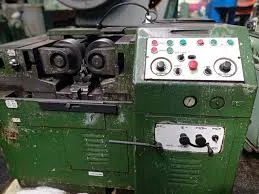
-
 Afrikaans
Afrikaans -
 Albanian
Albanian -
 Amharic
Amharic -
 Arabic
Arabic -
 Armenian
Armenian -
 Azerbaijani
Azerbaijani -
 Basque
Basque -
 Belarusian
Belarusian -
 Bengali
Bengali -
 Bosnian
Bosnian -
 Bulgarian
Bulgarian -
 Catalan
Catalan -
 Cebuano
Cebuano -
 Corsican
Corsican -
 Croatian
Croatian -
 Czech
Czech -
 Danish
Danish -
 Dutch
Dutch -
 English
English -
 Esperanto
Esperanto -
 Estonian
Estonian -
 Finnish
Finnish -
 French
French -
 Frisian
Frisian -
 Galician
Galician -
 Georgian
Georgian -
 German
German -
 Greek
Greek -
 Gujarati
Gujarati -
 Haitian Creole
Haitian Creole -
 hausa
hausa -
 hawaiian
hawaiian -
 Hebrew
Hebrew -
 Hindi
Hindi -
 Miao
Miao -
 Hungarian
Hungarian -
 Icelandic
Icelandic -
 igbo
igbo -
 Indonesian
Indonesian -
 irish
irish -
 Italian
Italian -
 Japanese
Japanese -
 Javanese
Javanese -
 Kannada
Kannada -
 kazakh
kazakh -
 Khmer
Khmer -
 Rwandese
Rwandese -
 Korean
Korean -
 Kurdish
Kurdish -
 Kyrgyz
Kyrgyz -
 Lao
Lao -
 Latin
Latin -
 Latvian
Latvian -
 Lithuanian
Lithuanian -
 Luxembourgish
Luxembourgish -
 Macedonian
Macedonian -
 Malgashi
Malgashi -
 Malay
Malay -
 Malayalam
Malayalam -
 Maltese
Maltese -
 Maori
Maori -
 Marathi
Marathi -
 Mongolian
Mongolian -
 Myanmar
Myanmar -
 Nepali
Nepali -
 Norwegian
Norwegian -
 Norwegian
Norwegian -
 Occitan
Occitan -
 Pashto
Pashto -
 Persian
Persian -
 Polish
Polish -
 Portuguese
Portuguese -
 Punjabi
Punjabi -
 Romanian
Romanian -
 Russian
Russian -
 Samoan
Samoan -
 Scottish Gaelic
Scottish Gaelic -
 Serbian
Serbian -
 Sesotho
Sesotho -
 Shona
Shona -
 Sindhi
Sindhi -
 Sinhala
Sinhala -
 Slovak
Slovak -
 Slovenian
Slovenian -
 Somali
Somali -
 Spanish
Spanish -
 Sundanese
Sundanese -
 Swahili
Swahili -
 Swedish
Swedish -
 Tagalog
Tagalog -
 Tajik
Tajik -
 Tamil
Tamil -
 Tatar
Tatar -
 Telugu
Telugu -
 Thai
Thai -
 Turkish
Turkish -
 Turkmen
Turkmen -
 Ukrainian
Ukrainian -
 Urdu
Urdu -
 Uighur
Uighur -
 Uzbek
Uzbek -
 Vietnamese
Vietnamese -
 Welsh
Welsh -
 Bantu
Bantu -
 Yiddish
Yiddish -
 Yoruba
Yoruba -
 Zulu
Zulu
High-Speed Thread Rolling Machine Pricing and Specifications for Enhanced Efficiency
Understanding High-Speed Thread Rolling Machines Key Insights and Quotes
In the realm of manufacturing, the efficiency and precision of metal threading processes are paramount. High-speed thread rolling machines have brought remarkable advancements in the way we manufacture screws, bolts, and various threaded components. These machines are designed to create threads through a process of cold forming, offering numerous benefits over traditional cutting methods. In this article, we will delve into the significance of high-speed thread rolling machines and explore insightful quotes from industry experts that shed light on their impact on production.
Understanding High-Speed Thread Rolling Machines Key Insights and Quotes
One of the most notable features of high-speed thread rolling machines is their ability to operate at exceptional speeds. This capability translates into higher output and reduced cycle times, which are critical factors for manufacturers aiming to meet market demands. Maria Gonzalez, a production manager at a leading automotive parts manufacturer, emphasizes this point In a world where speed equals competitiveness, high-speed thread rolling machines have given us an edge. We can produce thousands of components in a fraction of the time compared to traditional methods.
high speed thread rolling machine quotes

However, the advantages of high-speed thread rolling machines extend beyond just speed. The quality of the threaded components produced is also significantly improved. The cold working process enhances the mechanical properties of the metal, resulting in better fatigue resistance and overall durability. “Quality is non-negotiable in our industry,” states Robert Lee, a quality control expert. “With thread rolling, we achieve superior surface finishes and precise dimensions, which are crucial for applications in high-stress environments.”
Moreover, the versatility of high-speed thread rolling machines allows for various thread types and configurations, accommodating diverse industry needs. From standard threads to custom designs, manufacturers can effectively cater to specific requirements. Lisa Wong, a product development engineer, notes, “The adaptability of these machines is a game changer. We can easily switch between different thread profiles, enabling us to respond quickly to market trends and client requests.”
Another significant advantage of high-speed thread rolling machines is their reduced tooling costs. Unlike traditional methods, which may require frequent tooling changes, thread rolling can often use the same set of dies for prolonged periods. David Kim, a manufacturing consultant, states, “By utilizing high-speed thread rolling, companies can not only save on tooling costs but also reduce downtime associated with changeovers. This efficiency translates directly into improved profit margins.”
In conclusion, high-speed thread rolling machines represent a revolutionary shift in threading processes within the manufacturing industry. With their remarkable speed, enhanced product quality, and adaptability to various production needs, these machines are indispensable in a competitive landscape. As articulated by industry experts, the adoption of high-speed thread rolling technology is not just a trend; it is a necessary evolution towards more efficient and sustainable manufacturing practices. Embracing this technology means embracing the future of metalworking—where precision, speed, and quality converge to meet the demands of modern industry.
